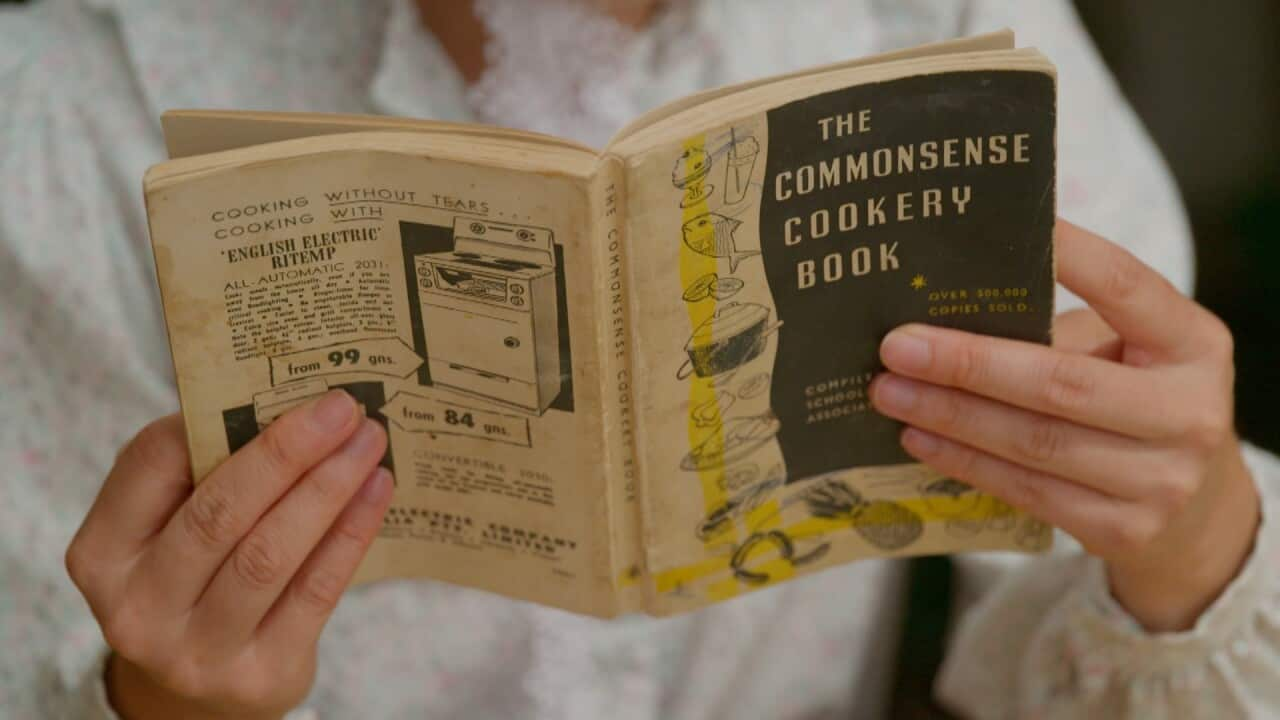--- Take a trip around Australia with , streaming free from Tuesday 8 August on . Catch the series on SBS Food at 8pm Tuesdays and Thursdays 8.30pm on SBS. ---
Take a moment to wipe the dust from your cookbook stack and cast your eye over the titles. If your collection features a copy of , you may just own one of the most important cookbooks in the country.
“This cookbook was the culinary bible of its time, first published in 1914,” says Poh Ling Yeow on episode two of the new SBS series,
“When it comes to Australian cuisine, this little book may just be one of the most important influences in our history.”

The Commonsense Cookery Book by the Home Economics Institute of Australia (NSW Division). Credit: HarperCollins Australia (supplied to SBS)
The Commonsense Cookery Book started out as a collection of teaching notes and recipes, collated by high school teachers who belonged to the Home Economics Institute of Australia (NSW Division).
“Back then, home economics teachers were the ones who held all of the recipes,” Gail Clarkson, a home economist from the tells SBS.
This cookbook was the culinary bible of its time, first published in 1914.Poh Ling Yeow
“The group of teachers applied to the Minister at the time to see if they could develop their recipe collection into a textbook. The approved textbook was named It became so popular that [Angus & Robertson] first published it in 1914. The cookbook was used as both a textbook for schools and a recipe book for the general public.”
Throughout the 1900s, the cookbook was also bought by parents and given to their adult children upon leaving home so they could learn the basics of cooking.
“Back then, if you didn’t learn to cook for yourself when you left home, you’d starve. You couldn’t jump on YouTube and learn how to cook. You couldn’t call a home delivery service either and there were only so many hamburgers you could eat. So this cookbook was a gift that people were given when they left home. It grew to become Australia’s cookery bible.”
Ever since the book’s creation, money raised from its sale has gone towards funding university scholarships for NSW-based home economics (or food technology teachers) students.
To date, a million copies of the 300-plus-page book have been sold. It's currently published by

The cookbook teaches readers everything from the basics to the complex. Credit: Illustration purchased by HEIA and supplied to SBS
Look inside the cookbook
Over the years, The Commonsense Cookery Book has been updated and re-released a number of times.
The current iteration has a cleaner and more spacious layout than the 1914 version. However, it still contains most of its original recipes like ANZAC biscuits, Pavlova, rabbit pie, Scotch egg, roast beef, roast mutton and an anchovy sauce that Poh pays homage to during the show.
“It still has recipes like tripe and crumbed brains in there,” says Clarkson. “Recipes using offal and cheaper cuts of meat were very common during the post-war era. We often debate whether we should take out these recipes but we always decide to leave them in there. These are the recipes that have been in the book since 1914.”
Back then, home economics teachers were the ones who held all of the recipes.Gail Clarkson
Clarkson explains that diverse recipes, reflecting a more multicultural Australia, made their way into the book during a 1978 review.

This is what the book looks like today Credit: katy_wright
“There’s a recipe for fried rice, a basic risotto, and spaghetti bolognese. These dishes were not popular in mainstream Australian society in 1914 although they did become common in the late 70s and 80s. These recipes show the influence of other cultures coming into Australia through food.”
Even though the book today exists in a world where celebrity chefs teach people to cook on reality TV and many hatted restaurants celebrate the modernity of dishes, it’s still a success.
Clarkson believes that the cookbook’s longevity simply demonstrates the nation’s love for home-cooked meals.
"This recipe book will take you on a journey from the very simple to moderately complex,” she says. “Anyone can pick it up and follow it. That’s probably why it’s over 100 years old and still going strong."

